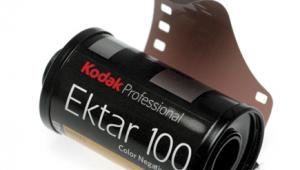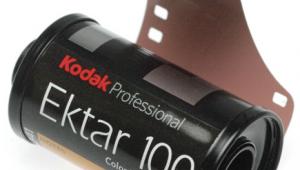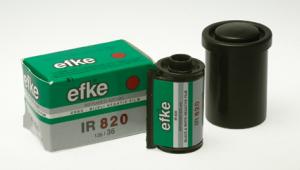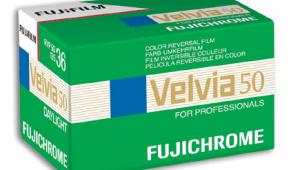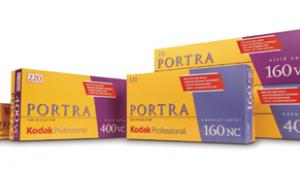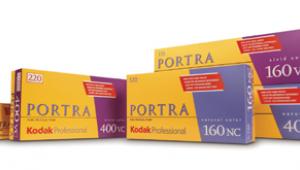Kodak’s Revised T-Max 400; A “Classic” Gets A Facelift
Film photographers are a cantankerous and ungrateful crew, often greeting revised films with suspicion and resentment instead of hope and pleasure. To some extent this is understandable, because they usually have to establish new development times and possibly new exposure indices, too; but the manufacturers' claimed improvements are usually honest, and without them, we'd still be shooting wet plates.
 |
|
|
Existing devotees of Kodak's T-Max 400 (TMY) will therefore have mixed feelings, but those who have not tried TMY, or have not tried it for years, are in for a pleasant surprise with 400-2TMY. Once they have adjusted to 400-2TMY (hereafter TMY2), existing TMY users should also be well pleased.
In a nutshell, it seems to do all that Kodak claims, and more. It is both sharper and finer grained, as claimed, and in our tests, it delivered better tonality; was easier to print; and was less critical in both exposure and development. The only claim we could not easily test was that it is now the sharpest ISO 400 film in the world. We don't have a microdensitometer, and besides, comparing TMY, TMY2, and Tri-X was time-consuming and expensive enough, without adding other ISO 400 films to the mix.
The claims for sharpness and grain are easily confirmed by shooting a test target with the old and new films side by side. The differences are not enormous, but they are clearly visible, especially if you examine the film under a microscope. Of course you have to adjust development times but this does not take long.
In the three developers we tried (Kodak's T-Max and Xtol, and Ilford's DD-X) we found that the new film needed about 10 percent less development than the old. Only the Ilford DD-X, our standard developer, was checked methodically with a densitometer; the others were checked by the simple expedient of shooting, processing and printing a lot of film, and seeing what sort of exposure and development time printed best on paper Grades 2 and 3 and gave the best tonality.
|
Delicatessen
|
|
 |
|
|
The Testing Regime
The seemingly extravagant approach of shooting lots of film, made possible only by a generous supply of test material from Kodak, had three additional benefits besides establishing new development times.
First, it more or less automatically tested the relative tolerance of the two films for over- and underdevelopment. When they first appeared, T-grain films were notoriously finicky about development regime. A small amount of underdevelopment and they were flat and lackluster; a small amount of overdevelopment and contrast went through the roof and grain grew rapidly. This was what led Ilford to describe their core-shell technology (introduced in Delta films at around the same time) as "not necessarily better, but certainly better behaved."
Both T-grain and Delta have greatly improved since those early days, but directly comparing TMY2 with TMY revealed yet another small but significant improvement in tolerance. Even now, TMY2 is a lot less tolerant of poor exposure and development than Tri-X, but it is enormously sharper and finer grained. And, of course, the two deliver very different tonality, though it seemed to us that TMY2 was significantly closer than its predecessor to Tri-X, widely regarded as Kodak's gold standard for ISO 400 tonality. Only you can decide your priorities, but what astonished us was that in some cases, Roger actually preferred the tonality of the new TMY shots to Tri-X--something that has never happened with any previous T-Max film. Frances still preferred Tri-X.
The second advantage of shooting lots of film was that it enabled us to test tolerance for over- and underexposure. Again, this happened more or less automatically, though we also bracketed deliberately in many cases. We also made a number of exposures by guesswork, using unmetered cameras. We are pretty good at guessing, but we knew that inevitably there would be times when we got it wrong. And we did.
Again, TMY2 seems more tolerant than its predecessor. As with any film, there is very little loss of quality with increasing exposure, once the necessary minimum has been given; but once you do reach the minimum, a reduction of as little as 1/3 stop can give a visible loss of quality.
This was the third and unforeseen advantage of our testing technique. It was most obvious with our Alpa shots (we tested both 35mm and medium format), but it was detectable in 35mm as well. The two of us got the best results with slightly different EIs: about 1/2 a stop. In other words, in Xtol, Frances preferred the nominal ISO of 400, or at least EI 320, where Roger preferred EI 320 or possibly even 250.
We were intrigued to see this difference emerge, despite identical development, enlargers, printing paper (Ilford's Multigrade Warmtone), and so forth. Mostly, no doubt, the difference is down to metering technique (see below) but there were also equipment differences: different lenses, different camera bodies, different filters.
|
Packhorse Bridge
|
|
 |
|
|
Personal Testing Vs. Reviews
The EI variations lead to three very important points about film testing. First, you can never rely uncritically on anyone else's EIs and development times. Second, developers significantly affect film speed, even at a constant contrast. Third, there is the old shibboleth about films not "really" being as fast as their ISO speeds.
The first requires no explanation, being well illustrated by our experience. The only thing to add is that manufacturers' speeds and development times are almost invariably better starting points than a guru's maunderings: why, after all, would manufacturers deliberately issue misleading data?
The second can be demonstrated easily enough: the penalty for ultra-fine grain development is reduced speed, and the penalty for increased speed is coarser grain. In DD-X, for example, we would cheerfully rate TMY2 at 400 (Roger) and 500 (Frances).
- Log in or register to post comments





